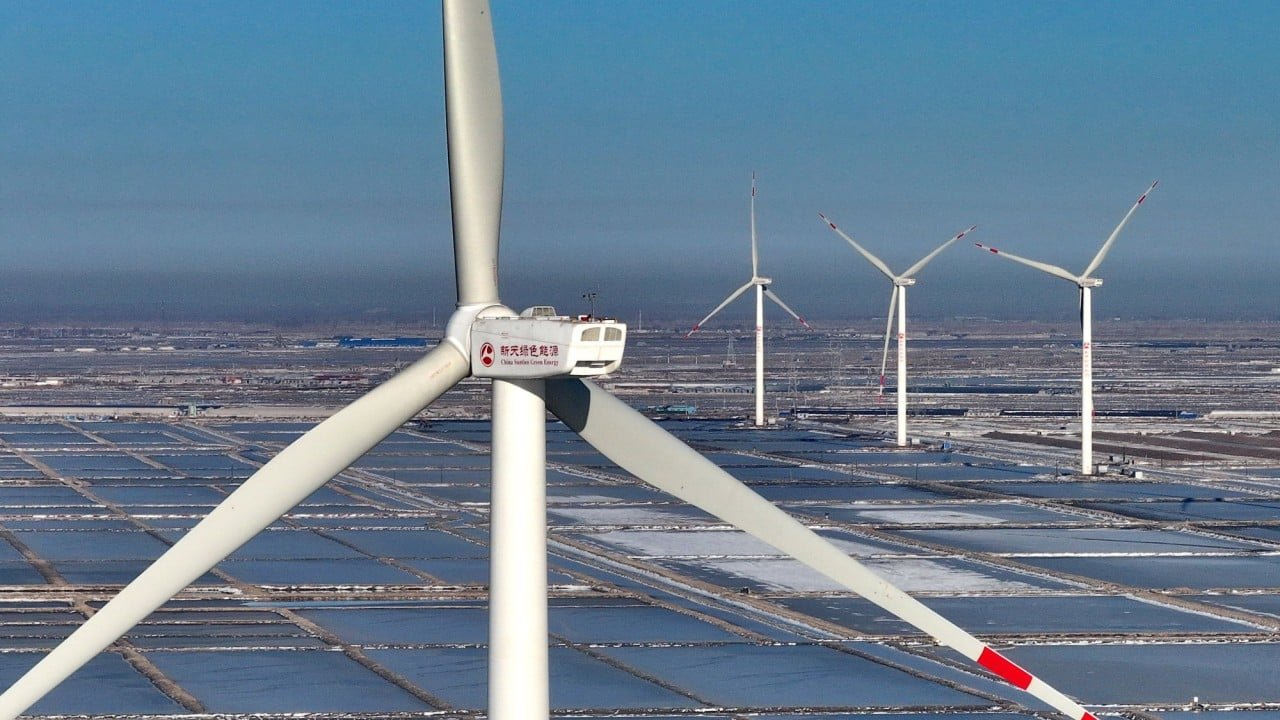China is on the cusp of a monumental shift in its energy landscape, with wind and solar power poised to outpace coal plants this year.
In a groundbreaking move, China is on the cusp of a monumental shift in its energy landscape, with wind and solar power poised to outpace coal plants this year. The latest data from the China Electricity Council’s annual report reveals staggering numbers, showcasing the nation’s unprecedented achievements in the renewable energy sector.
In 2023, China added a remarkable 217 GW in photovoltaics, surpassing the rest of the world’s combined efforts. For perspective, the United States, the second-largest market, only saw 175 GW added during the same period. These statistics highlight China’s dominant position in the global renewable energy arena.
The China Electricity Council estimates that by the end of 2024, photovoltaics and wind power will constitute 40% of grid-connected capacity, surpassing coal’s share at 37%. This represents a significant reversal from the previous year. In absolute numbers, the combined wind and solar capacity will reach 1.3 TW, surpassing the 1.2 TW target for 2030.
China’s strides in solar power are particularly noteworthy, with capacity surging by 55% to reach 609 GW, a figure larger than the entire installed capacity of the United States, the second-largest market.
However, challenges loom on the horizon. While solar module prices have plummeted, there are concerns that they may have reached unsustainable levels. The consistent supply of fuel enables coal power plants to operate 24/7, whereas photovoltaics and wind facilities depend on variable weather conditions. Despite these challenges, China has shown a commitment to transitioning towards cleaner energy sources.
In 2023, coal still accounted for 59% of electricity consumption in China, compared to the 15% share held by solar, wind, and other renewables excluding hydropower. The National Energy Administration (NEA) emphasizes the need for a balanced energy mix to ensure a reliable power supply.
China’s global dominance in the market is evident, with exports of solar power equipment reaching a staggering USD 245.3 billion in 2023.
The wind gear segment also contributed significantly, reaching USD 33.4 billion. However, even with these successes, domestic solar industry players are grappling with shrinking profit margins due to fierce competition. The resulting price cuts, while contributing to the solar boom, have put pressure on companies to find ways to lower costs.
Wind power additions have also played a pivotal role in China’s energy revolution, constituting an estimated 60% of the global total, surpassing even photovoltaics. China’s total electricity generation capacity soared by 13.9% to 2.92 TW, with wind capacity reaching a record 441.3 GW, a 21% increase. BloombergNEF estimates indicate that China accounted for a staggering 60% of new wind and 58% of newly installed solar power capacity worldwide in 2023.
In addition to leading in renewable energy capacity, China is at the forefront of global energy storage investments. Excluding pumped storage hydropower, capacity spiked over 260% in 2023 to 31.4 GW. This category encompasses various technologies, with lithium-ion solutions making up 97% of the total. The average energy storage duration stands at 2.1 hours, reflecting China’s commitment to developing a robust energy storage infrastructure.
Clean energy investments have become a driving force for China’s economy, with a 40% jump to 6.3 trillion yuan (USD 890 billion) in 2023. This includes investments in renewables, nuclear energy, electricity networks, storage, electric vehicles, and railways.
Notably, clean energy investments contributed significantly to the nation’s economic growth, accounting for two-fifths of the overall expansion and surpassing the total global investments in fossil fuels.
As China continues to lead the charge in renewable energy adoption, its ambitious targets and substantial investments underscore a commitment to a sustainable and cleaner future. The world watches as China sets a new standard for global energy transformation, demonstrating the feasibility and economic viability of a green transition.
